AMD Details Ryzen Threadripper Pro 5000 WX-Series, Zen 3 up to 64 Cores
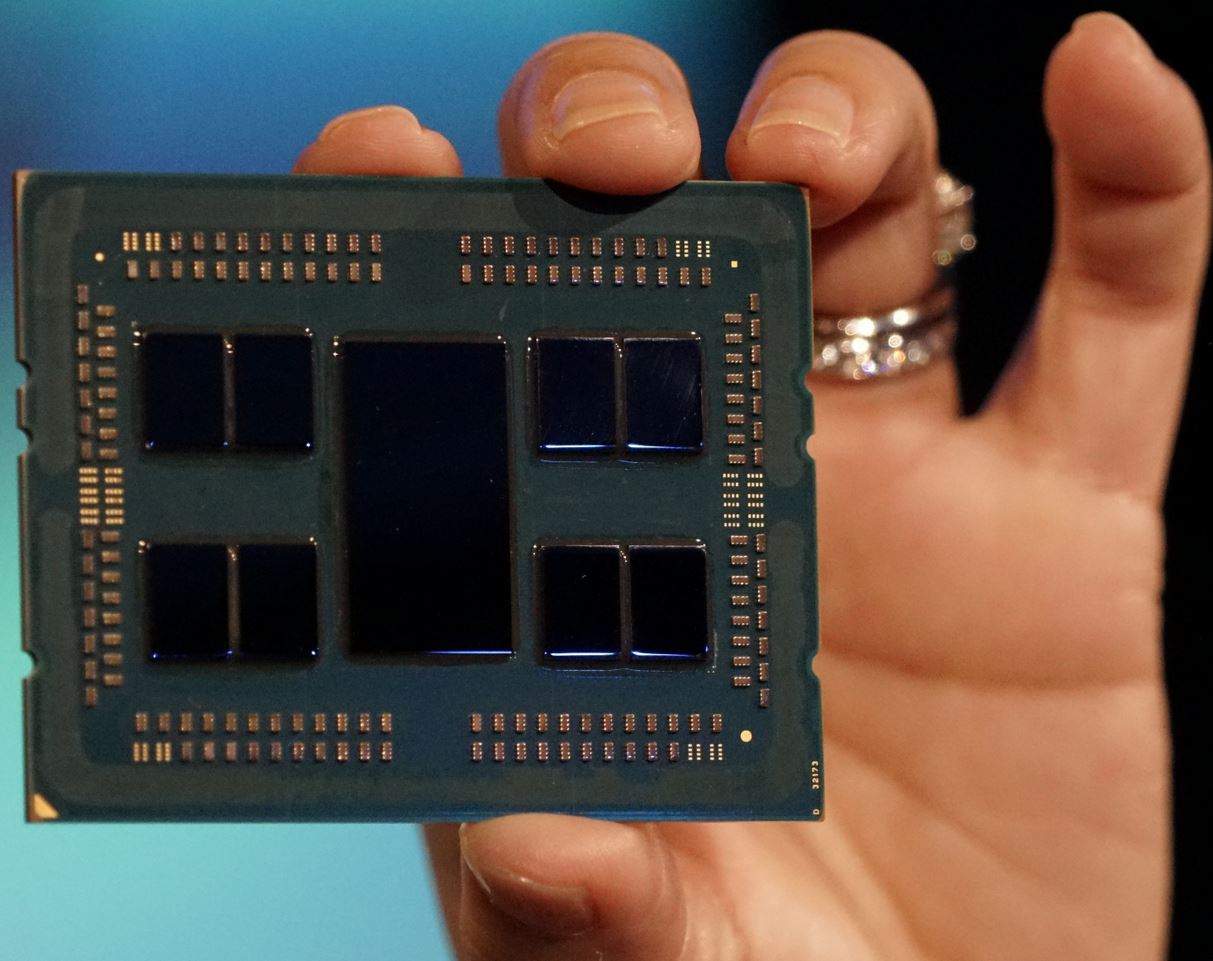
AMD announced today that the 'Chagall' Threadripper Pro 5000 WX-series processors will be available to OEM and system integrator partners on March 21, 2022. AMD's new 5000 WX-Series models bring higher clock speeds up to 4.5 GHz, the Zen 3 microarchitecture with a 19% IPC improvement, eight channels of DDR4 memory, 128 lanes of PCIe 4.0, and unified L3 cache to AMD's workstation lineup that spans from 12 cores up to the halo 64-core 128-thread Threadripper Pro 5995WX model.
These new chips bring a slightly modified EPYC Milan design to workstations, serving as an update for the Zen 2-powered Threadripper Pro 3000 series that has dominated the workstation segment since its release in mid-2020. In fact, AMD claims to have captured 60% of the North American workstation market (IDC). The new chips also carry all of the same Pro features as their predecessors, like AMD's Pro Security, Manageability, and Business Ready suites (18-month software stability, 2-year chip availability), an area where Intel's competing chips are lacking.
The new Threadripper Pro chips will grapple with Intel's Ice Lake Xeon W-3300 series, which tops out at 38 cores, for a spot on our list of best CPUs for workstations. That list is currently dominated by the Threadripper Pro 3995WX we recently reviewed. As we saw with AMD's prior-gen Pro release, the Threadripper Pro 5000 chips will come to market first in a refreshed lineup of Lenovo's ThinkStation P620 workstations. Lenovo also has a lineup of Ryzen 6000-based mobile workstations in development, but the company hasn't shared specifics for either platform yet.
As before, the Threadripper Pro chips drop into the AMD sWRX80 socket and work with the WRX80 chipset, so they are backward compatible with previous-gen systems and motherboards after a BIOS update. Lenovo again has an undisclosed period of exclusivity with Threadripper Pro, but AMD expects to announce more OEM/SI partners during the second half of 2022. There's no word on when (or if) we will see these models come to retail channels, as we saw with Threadripper Pro 3000. As such, AMD hasn't announced pricing for the new Pro models, either.
We also don't know if non-Pro Threadripper 5000 models will come to the HEDT segment, a market that AMD currently rules uncontested. However, Intel purportedly has its Sapphire Rapids HEDT lineup coming to market later this year with up to 56 cores and PCIe 5.0 and DDR5 support, so we expect that AMD will have its own lineup ready to cement its HEDT leadership. Whether or not that consists of Zen 4 Threadripper models with expanded connectivity options remains to be seen.
AMD Ryzen Threadripper Pro 5000 WX-Series Specifications
| Row 0 - Cell 0 | Cores / Threads | Base / Boost (GHz) | L3 Cache (MB) | TDP | MSRP/RCP | PCIe |
| Threadripper Pro 5995WX | 64 / 128 | 2.7 / 4.5 | 256 | 280W | N/A | 128 |
| Xeon W-3375 | 38 / 76 | 2.5 / 4.0 | 57 | 270W | $4,499 | 64 |
| Threadripper Pro 3995WX | 64 / 128 | 2.7 / 4.2 | 256 | 280W | $5,489 | 128 |
| Threadripper 3990X | 64 / 128 | 2.9 / 4.3 | 256 | 280W | $3,990 | 72 |
| Threadripper Pro 5975WX | 32 / 64 | 3.6 / 4.5 | 128 | 280W | N/A | 128 |
| Xeon W-3365 | 32 / 64 | 2.7 / 4.0 | 48 | 270W | $3,499 | 64 |
| Threadripper Pro 3975WX | 32 / 64 | 3.5 / 4.2 | 128 | 280W | $2,749 | 128 |
| Threadripper Pro 5965WX | 24 / 48 | 3.8 / 4.5 | 128 | 280W | N/A | 128 |
| Xeon W-3345 | 24 / 48 | 3.0 / 4.0 | 36 | 250W | $2,499 | 64 |
| Threadripper 5955WX | 16 / 32 | 4.0 / 4.5 | 64 | 280W | N/A | 128 |
| Xeon W-3335 | 16 / 32 | 3.4 / 4.0 | 24 | 250W | $1,299 | 64 |
| Threadripper Pro 3955WX | 16 / 32 | 3.9 / 4.3 | 64 | 280W | $1,149 | 128 |
| Threadripper Pro 5945WX | 12 / 24 | 4.1 / 4.5 | 64 | 280W | N/A | 128 |
| Xeon W-3323 | 12 / 24 | 3.5 / 4.0 | 21 | 220W | $949 | 64 |
| Threadripper Pro 3945WX | 12 / 24 | 4.0 / 4.3 | 62 | 280W | N/A | 128 |
Here we can see the five new Zen 3-powered Threadripper Pro 5000 WX-series chips, all with a top dual-core clock speed of 4.5 GHz — a generational increase of 200 to 300 MHz, depending on the model. We also see a 100 MHz improvement to the base clock speed on all models except the 64-core 128-thread Threadripper Pro 5995WX.
These slight clock speeds denote that AMD has extracted more frequency (not to mention IPC) out of the same 280W TDP envelope that applies to both the current and previous-gen chips. Notably, the 280W limit is likely imposed by the sWRX80 socket design, so AMD doesn't have much room to increase frequencies here. As noted, these chips are based on the EPYC Milan data center chips.
Except for the quad-channel Ryzen Threadripper 3990X we left in as the consumer HEDT comparison point, all of the above models (Intel included) support eight channels of DDR4-3200 ECC memory. Threadripper Pro still tops out at an incredible 256MB of L3 cache on the highest-end models, but the cache is now a contiguous 32MB block for each eight-core cluster, improving performance over the prior gen.
AMD's lineup has some stark contrasts to the Ice Lake Xeon W-3300 lineup, especially with the maximum core/thread count weighing in at 64/128 compared to Intel's 38/76 and the maximum cache capacity of 256MB over Intel's 57MB.
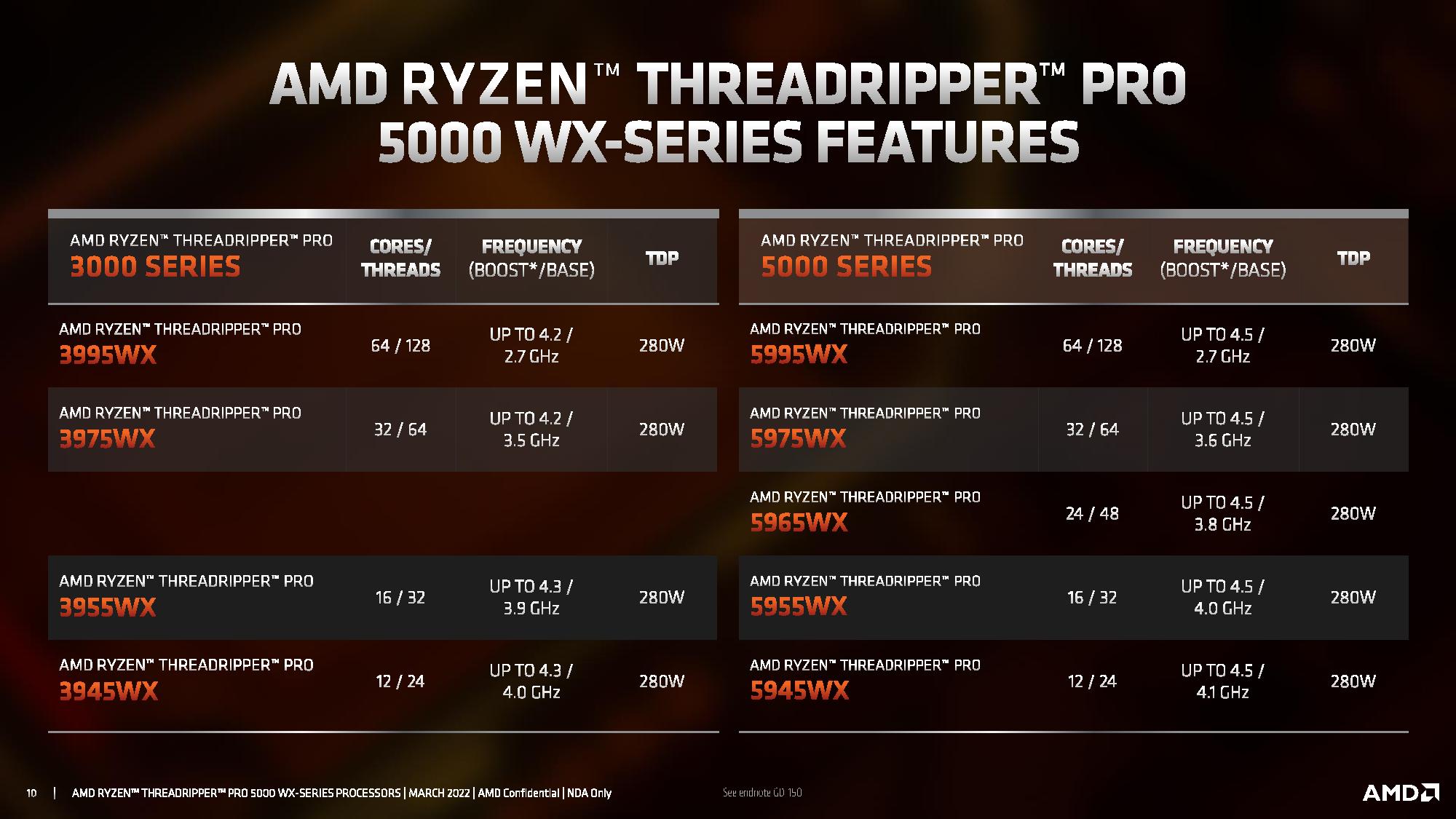
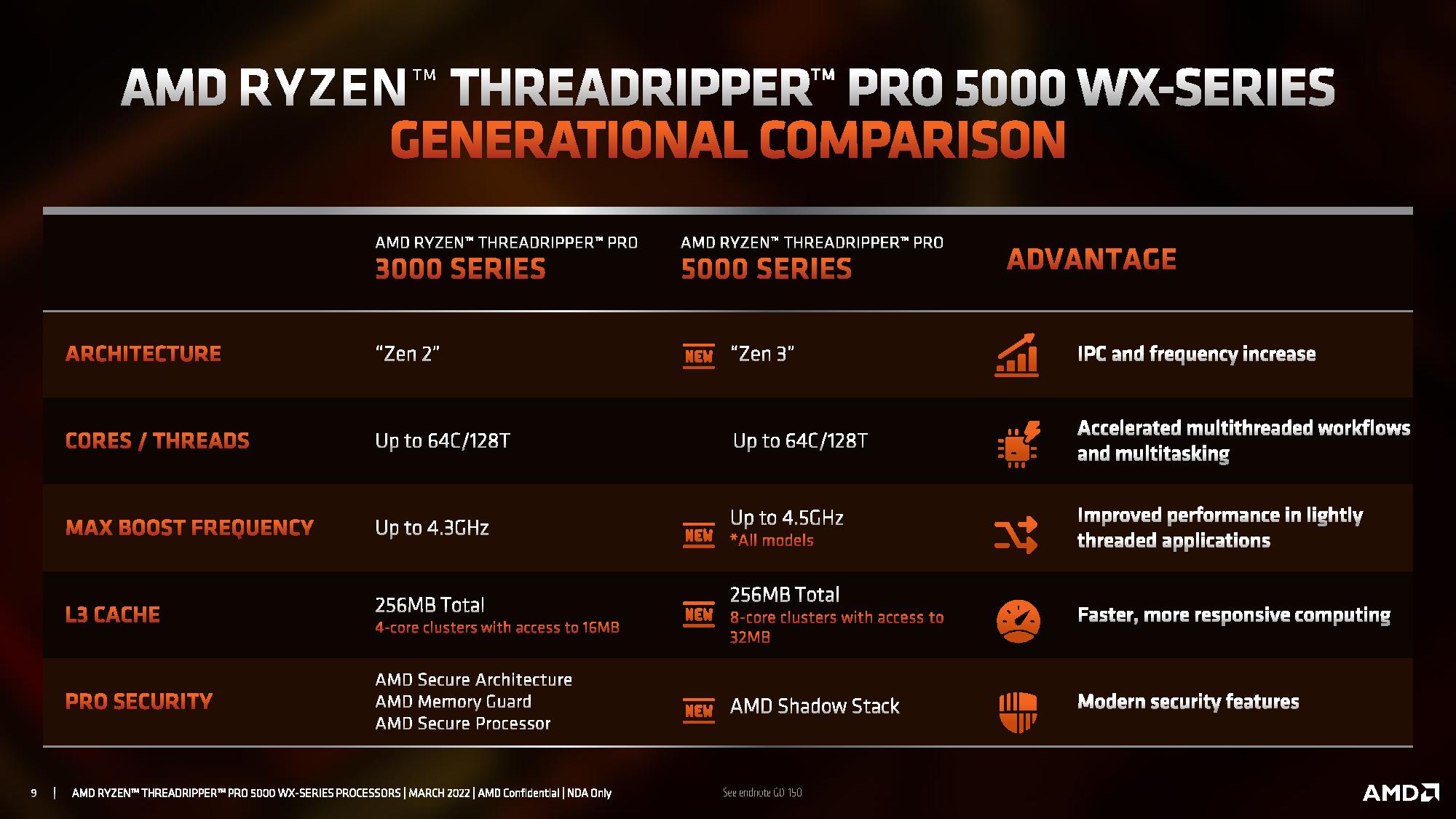
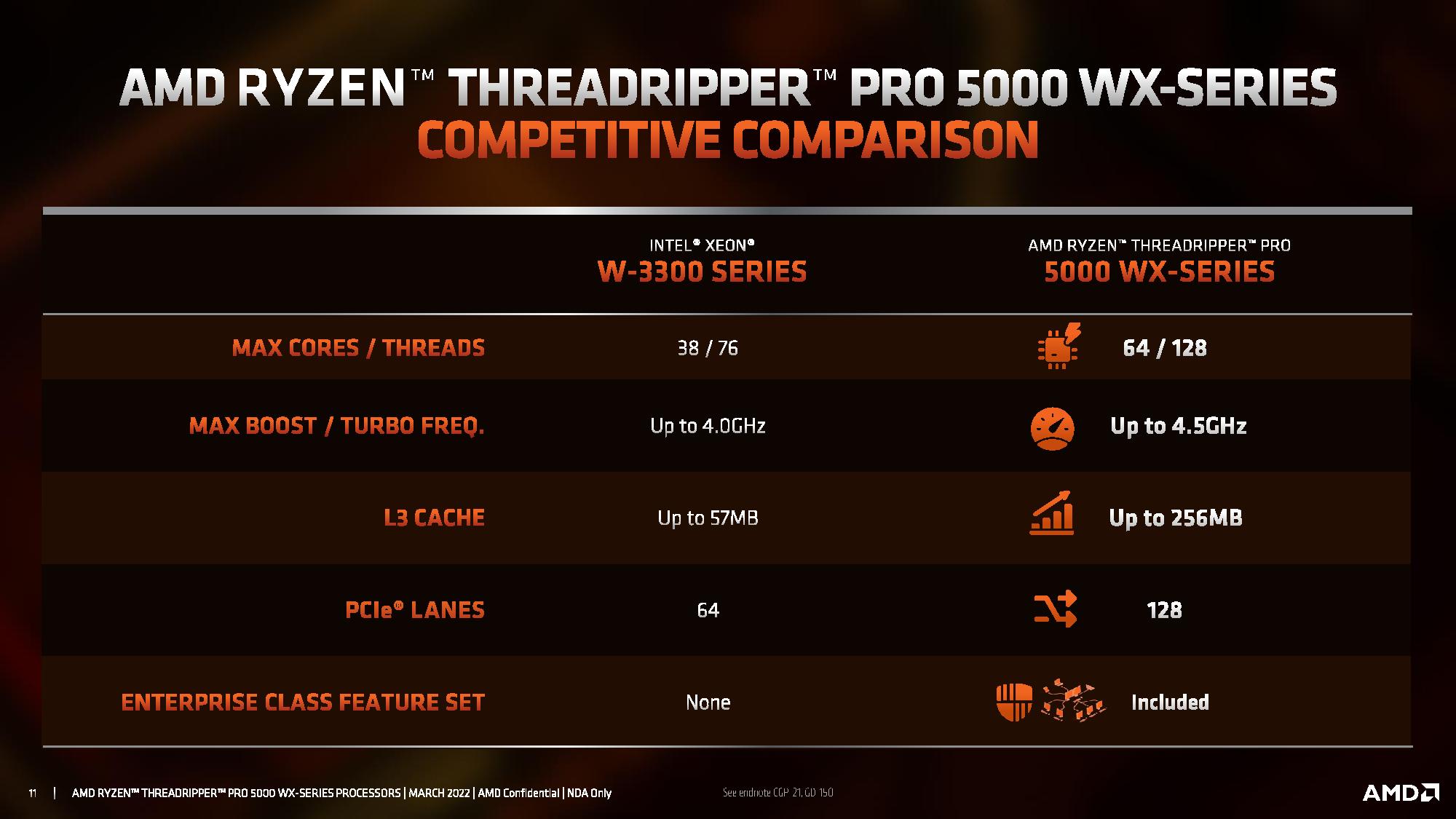

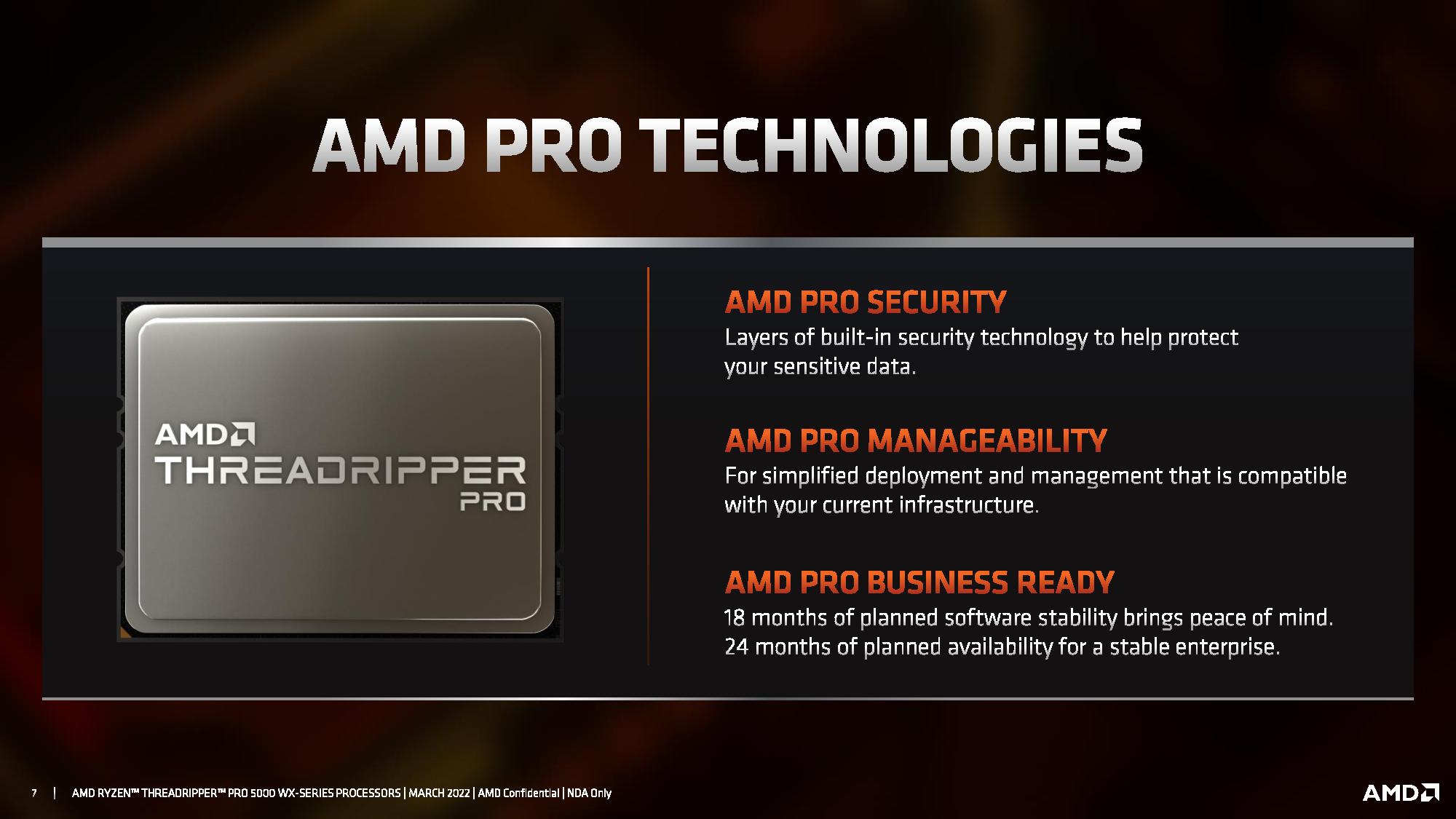
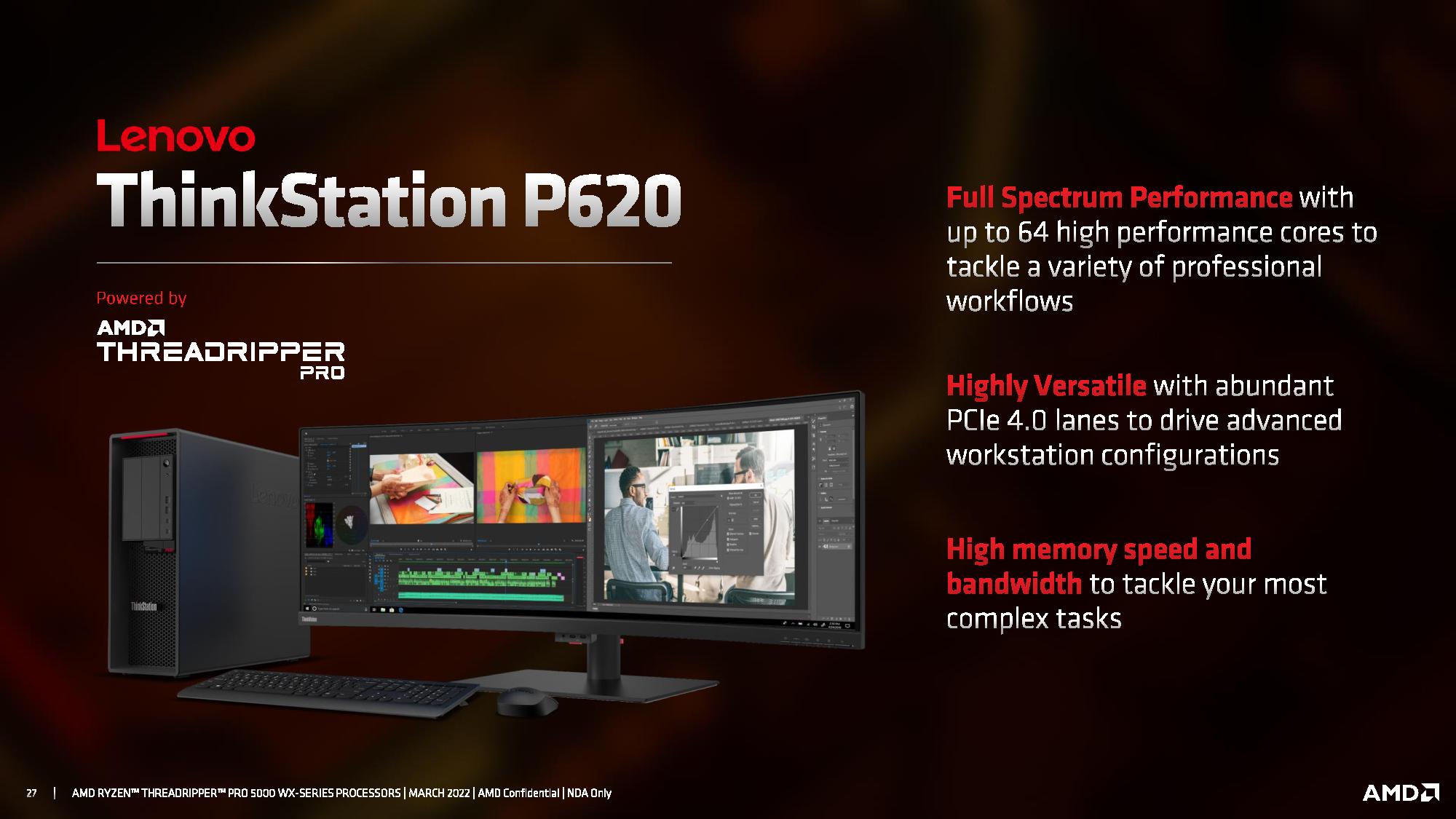
Additionally, AMD serves up 128 PCIe 4.0 lanes compared to Intel's 64 lanes, a critical advantage for AMD in this segment, as most workstations come kitted with plenty of additives, like GPU accelerators, NVMe storage, and high-speed NICs.
AMD's Pro Security suite includes the same Secure Architecture, Memory Guard, and Secure Processor features as the prior-gen Threadripper Pro models and adds Shadow Stack, a mechanism to counter control flow attacks. Unfortunately, Intel's Xeon W-3300 series is woefully inadequate here, with no enterprise-class feature set.
AMD also added a 24-core, 48-thread 5965WX model that wasn't present with the previous gen. We expect the Threadripper Pro lineup to come to the retail market in due course, but AMD hasn't shared pricing yet. As with the last-gen, we also expect that AMD will only release a subset of these models for retail, as there is some overlap with the lower-end 16- and 12-core models with its capable client family.
AMD Ryzen Threadripper Pro 5000 WX-Series vs Intel Xeon W Benchmarks
AMD says it had 300 design wins with its previous-gen Threadripper Pro lineup, and it expects that number to grow with the 5000 WX-series. Those systems target an incredibly diverse section of the professional market that includes oil and gas applications, media and entertainment (like DreamWorks), design and manufacturing workloads, cloud computing customers that use Threadripper Pro for local workstations, and even 12 auto manufacturers, with 12 more in the pipeline.
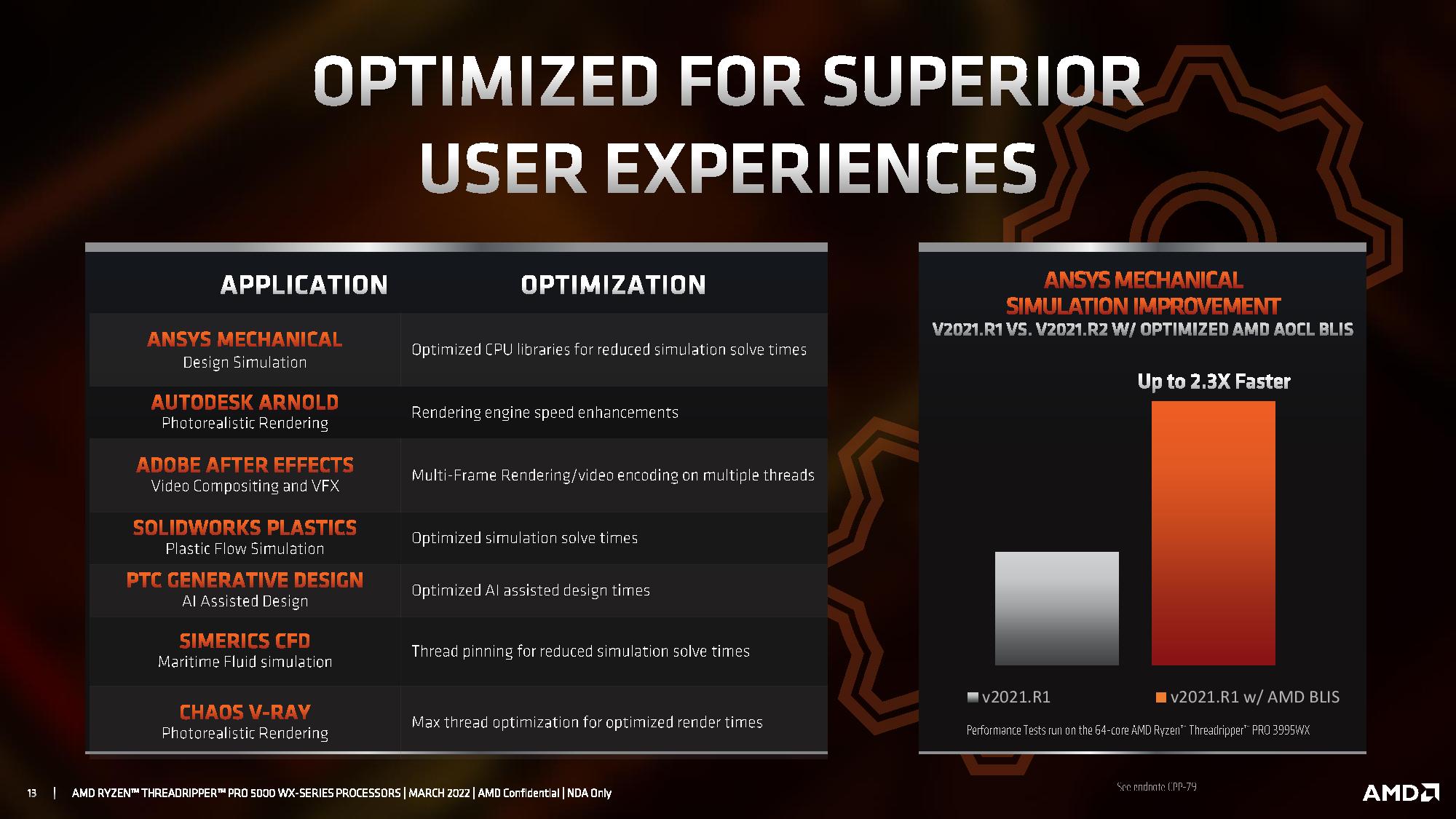

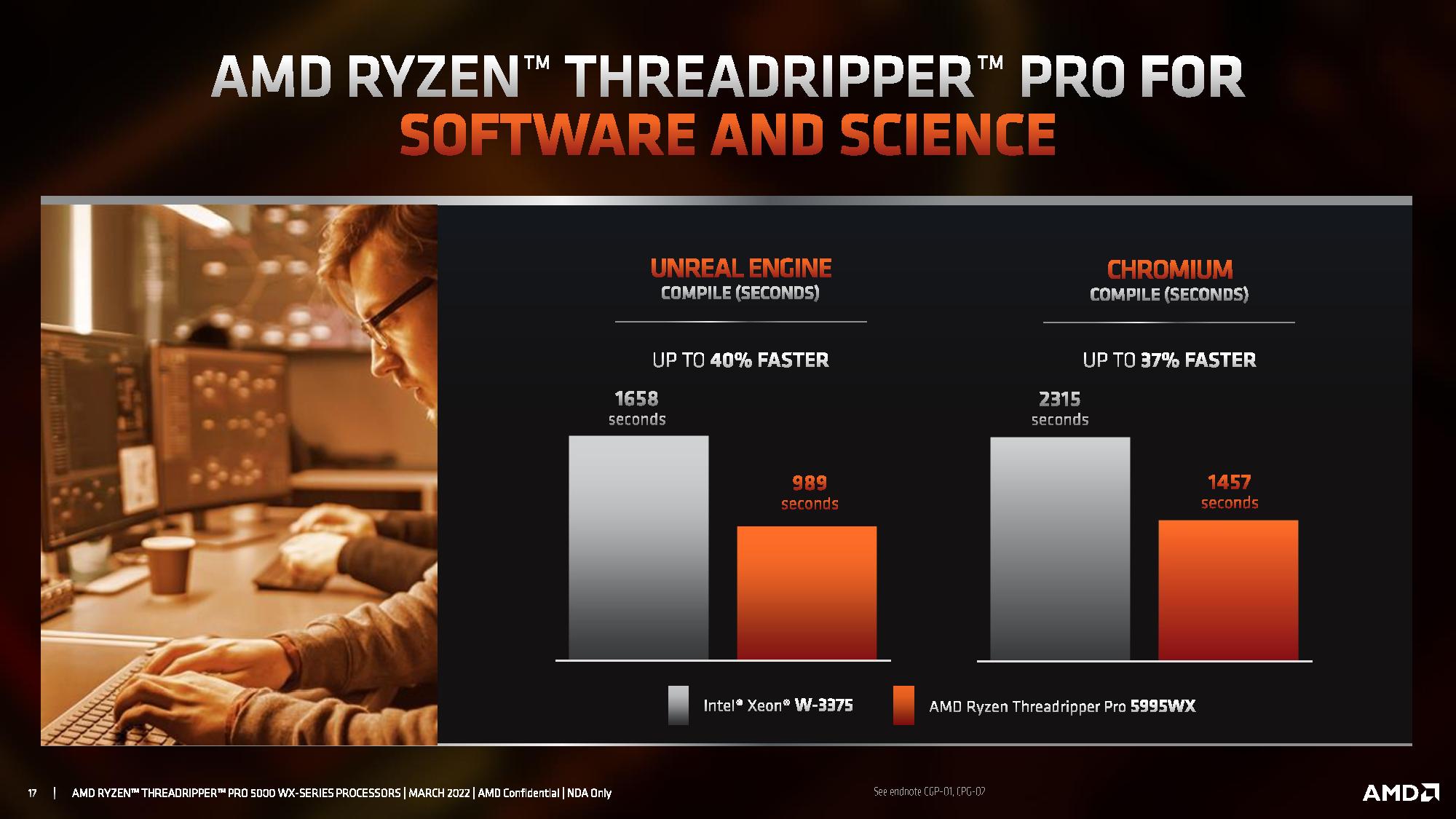




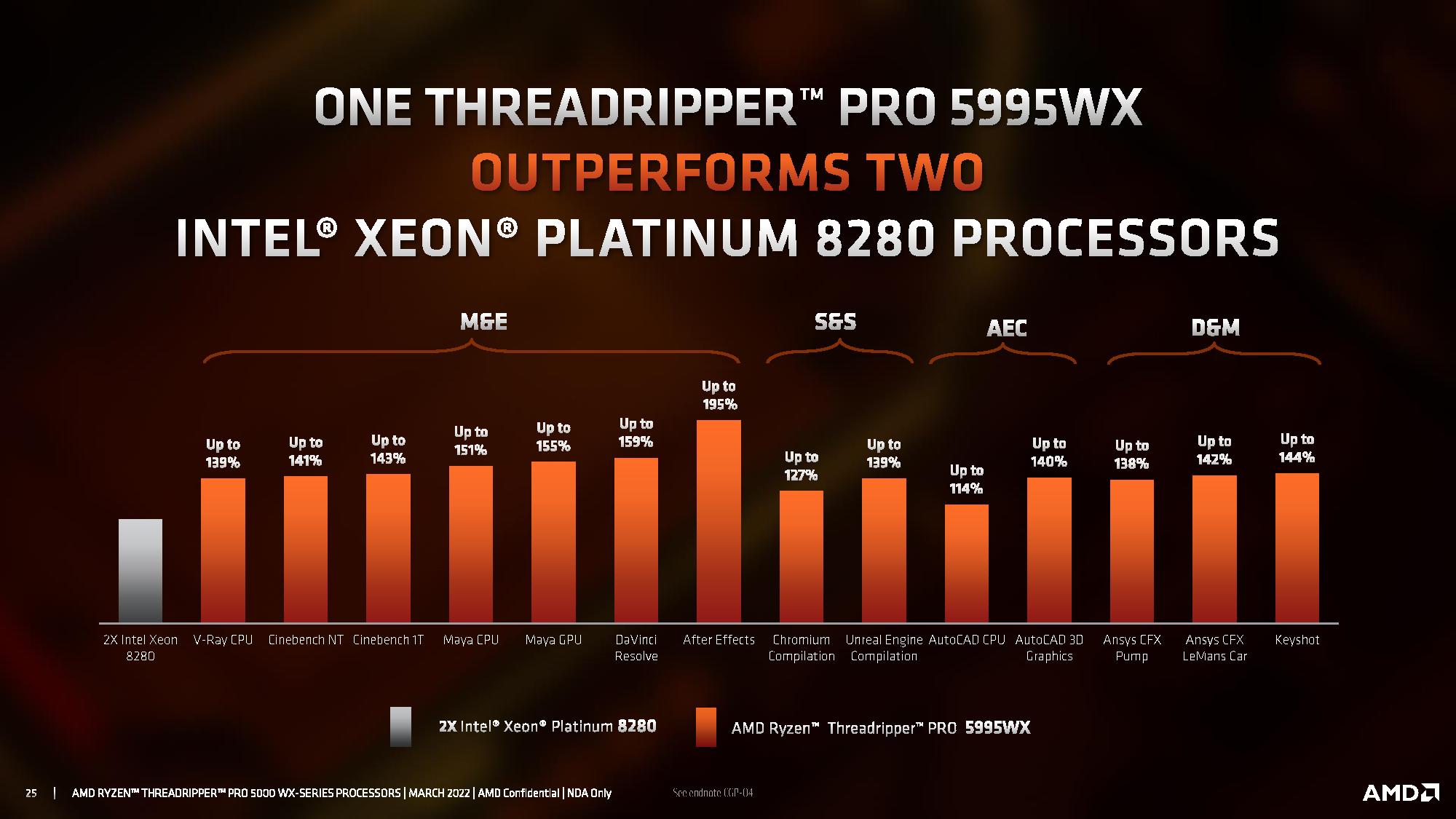
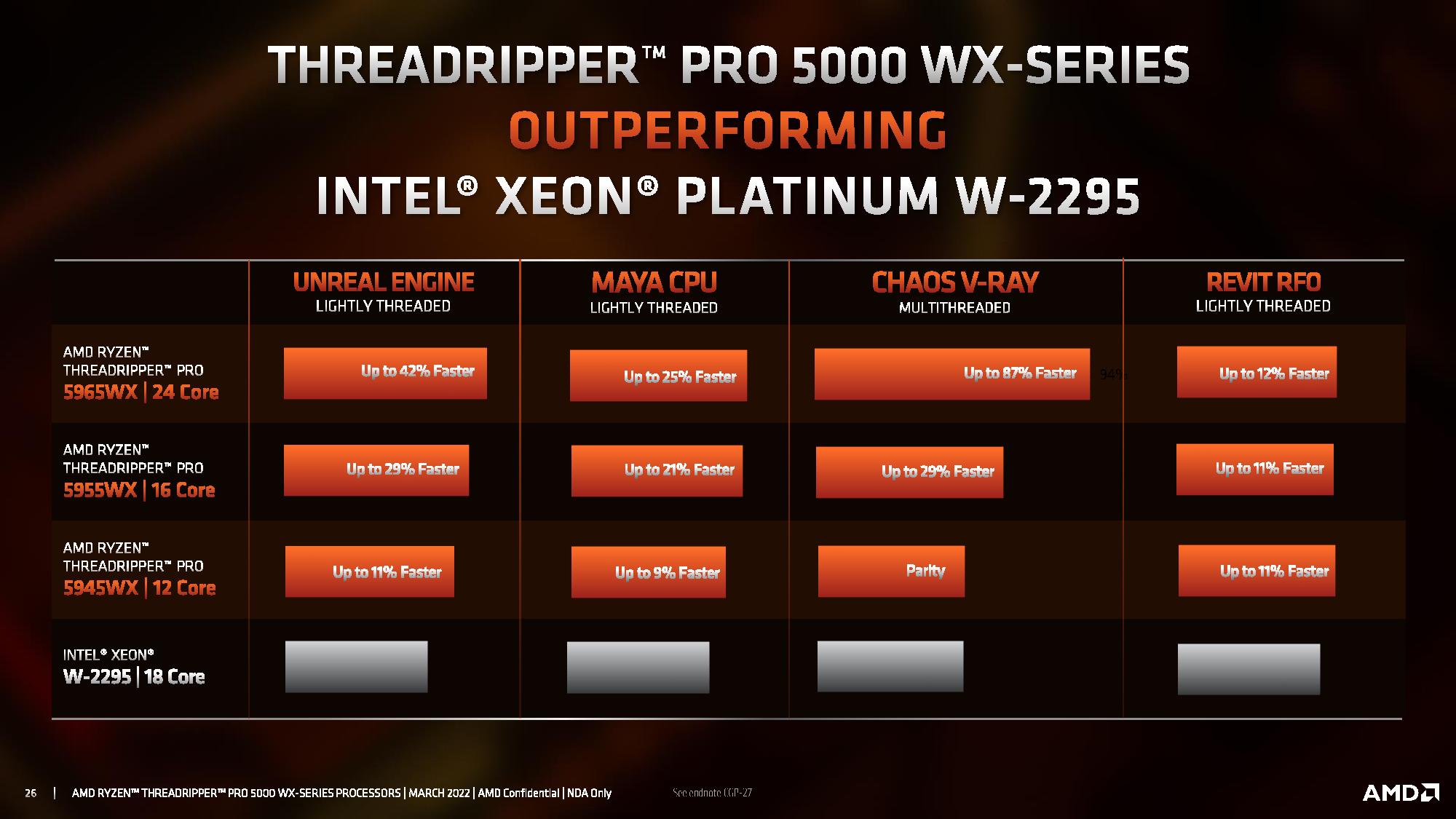
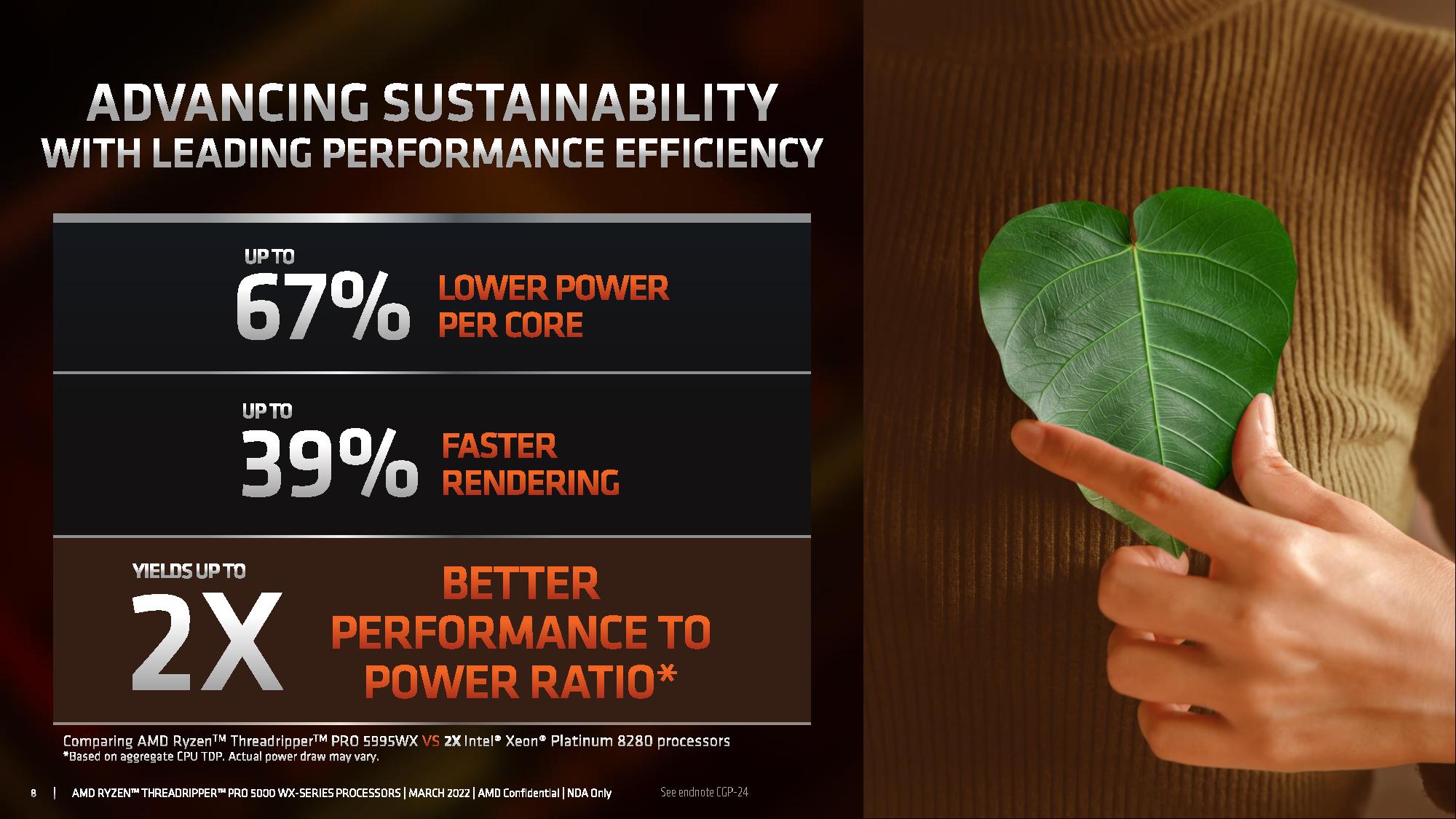

AMD shared some of its internally-derived benchmarks to back up its performance claims, but as with all vendor-provided benchmarks, take these with a grain of salt. We've included AMD's test notes at the end of the album. AMD touts the performance advantages of its higher clock frequencies and Zen 3 architecture relative to competing Intel chips in a broad spate of different workloads and against various Intel chips.
We won't go through the above album of benchmarks in detail, they speak for themselves, but there are more important broader considerations at play.
AMD's continued work with software developers is of particular importance here. Certified software solutions are imperative in the workstation space, and AMD's inaugural Threadripper solution could suffer at the hands of untuned software. Simply put, the combination of a never-before-seen number of cores and a unique architecture hamstrung performance in some applications due to unoptimized code. Still, as our testing back in 2020 showed, AMD had already made impressive strides in fostering ecosystem support for some industry-standard benchmarks and applications.
AMD's work continues, and the company highlighted a 2.3X improvement in the ANSYS mechanical simulation software after code tuning and a 200X improvement in the Autodesk Arnold rendering software. These projects continue with other software providers, which isn't surprising given AMD's continuing market share gains in the workstation market.
Workstations also need to extract the utmost performance from GPU-accelerated workloads, like those we've tested here. AMD's first-gen Threadripper processors really suffered in this category, but the second-gen Zen 2-powered models marked a significant improvement in pushing GPUs. Given that these types of GPU-accelerated software are often reliant upon single-threaded performance and hefty L3 cache allocations, we expect AMD's claims of continued advances in GPU accelerated workloads to be accurate. We already know that Zen 3 brought big performance improvements to single-threaded performance. That's crucial in a market where GPUs are a common accessory, and a single professional Quadro card can weigh in around $5,500.
This same theory also applies to storage; given Threadripper's support for 128 lanes of PCIe 4.0, speedy performance with NVMe SSDs is essential. AMD claims the Threadripper 5000 WX-series also offers superior performance in storage-bound workloads, thus maximizing the investment in costly storage arrays.
And all of this isn't to mention the sheer computational heft afforded by beefy core counts and generous slabs of L3 cache. With access to plenty of memory and storage throughput, we expect that AMD will carve out substantial wins in many categories, especially relative to Intel's Xeon W series that already struggles against the previous-gen Threadripper lineup.
Lenovo will be the lead partner with its ThinkStation P620 again, and those models will be available on March 21. AMD says the Threadripper Pro 5000 WX-Series also begins shipping to other OEMs/SIs in March.
Get Tom's Hardware's best news and in-depth reviews, straight to your inbox.

Paul Alcorn is the Editor-in-Chief for Tom's Hardware US. He also writes news and reviews on CPUs, storage, and enterprise hardware.